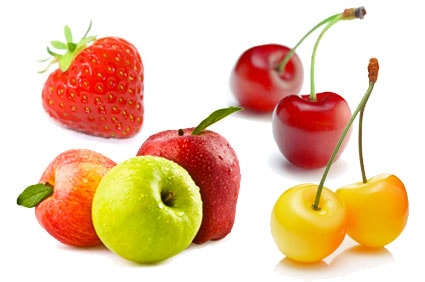
Written By: Sejal Dave, RD
Title: Registered Dietitian
Alumni: University of Florida
Last Updated on:

People with diabetes quickly learn that not all carbohydrates are created equally. This can make it tough to choose which foods to include in your diabetes meal plan. Some people with diabetes believe that fruits are off-limits. Are they really?

Table of Contents
In general, foods with low GI (glycemic index) values are higher in fiber, and fiber helps keep you feeling fuller longer. Dietary fiber has also been shown to help prevent rapid swings in blood glucose level, which results in a more consistent or predictable blood glucose pattern throughout the day. On the other hand, foods that have high GI levels may leave you feeling hungry and unsatisfied, which could lead to overeating.
Contrary to popular myth, sweet fruits can be part of your diabetes meal plan. They are a good source of fiber and antioxidants, and many fruits have low GI levels. Check out the following examples.
*Remember that one carbohydrate serving is equal to 15 grams.
As mentioned above, all carbs are not created equal, and on that same note, all people are not the same. Each person with diabetes has their own experience with how different carbs impact their blood glucose levels. Keep in mind that a lower GI value does not mean that portion size does not count. Look at both the amount of carbs per serving and the GI values to make the most informed choice for your diabetes meal plan.
Alumni: University of Florida – Sejal is a registered dietitian, a certified diabetes educator and she holds a masters degree in nutrition and health. Sejal was the project coordinator for the Veteran’s Administrations (VA) national weight loss program and previously worked for the VA hospital in Tampa, FL as a Spinal Cord Injury dietitian.
Sejal has had numerous clinical and community education experiences, including pediatric and intensive care nutrition support. She has also had the opportunity to teach nutrition courses at the community college level to students interested in pursuing health professions. One of her favorite areas of education is diabetes management.
apples, cherries, dates, diabetes, diabetes diet, fruits, glycemic index, pears, plums, raisins, strawberries, watermelon